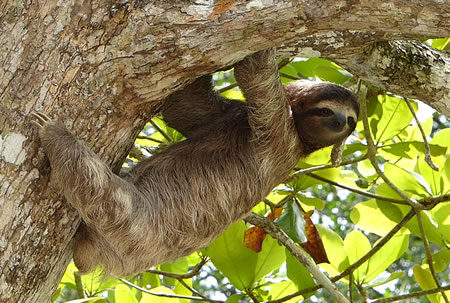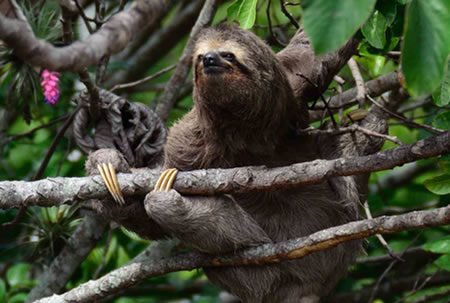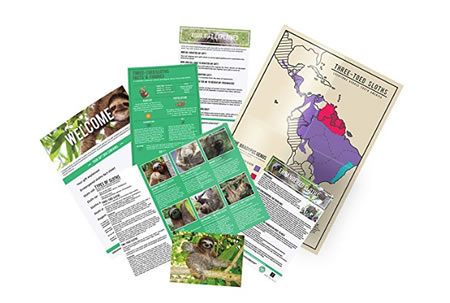
Adopt a Sloth
Try our udopt'r to find the perfect animal adoption for you! >>
Our Sloth Says…
Unless you look very closely, you will find it difficult to see me in the tree tops of my natural habitat of the rainforest. I move extremely slowly because I need to conserve as much energy as possible, and I want to avoid being eaten by an eagle or jaguar. I am rapidly losing my habitat because humans are clearing the rainforests where I live for agriculture, so please adopt me and help keep my habitat and species protected.
Adopt a sloth and receive
- A fantastic sloth gift pack
- A sloth adoption gift certificate
udopt'r choice
Sloth’s are famous for their slow movement as well as spending the vast majority of their lives hanging upside down from the trees they live in of the South African and Central American tropical rainforests. The sloth’s name is closely related to the word slow because of its extremely low metabolic rate and rather sedate movements.
udopt it because
- All six species of sloth are facing threats from habitat destruction.
- A sloth adoption is a great way to learn about one of the world’s most fascinating mammals.
- Adopting a sloth for a friend or family member makes for the perfect gift.
- The sloth poster is a fabulous decorative item.
Adopt a Sloth Gallery
Delivery information
Did you know?
- Sloths move very slowly because they have extremely slow metabolism which is an evolutionary adaption to their low energy diet that also allows them to avoid being detected by predators.
- Sloths are almost completely helpless when they are on the ground, but are fantastic swimmers and of course are very adept in the tree tops.
- The average sloth travels about 41 yards per day which is less than half the length of a football field.
- Sloths sleep up to 15 hours a day and spend the remaining 9 hours of the day foraging for food, trying to maintain a low body temperature by staying out of the sun and remaining in the shade.










